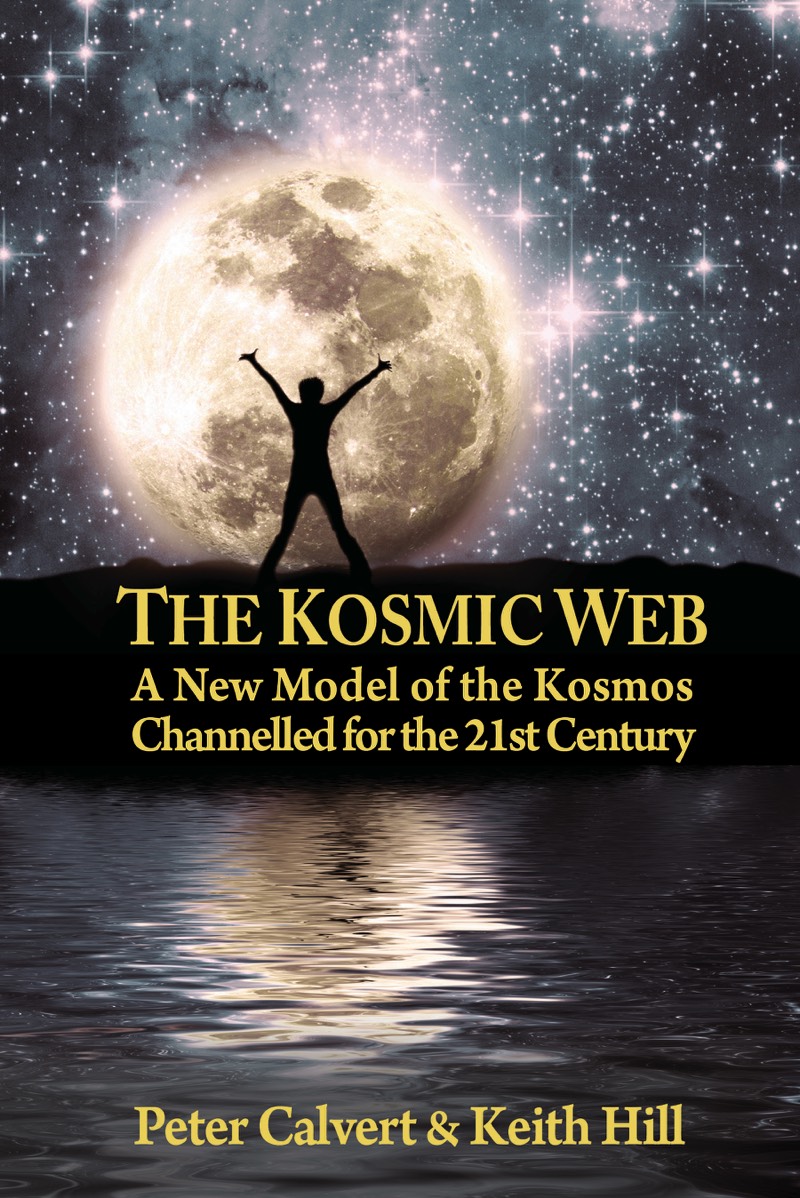ABOUT THE AUTHORS
Peter Calvert is a writer and channeller. He is a Reiki master and past-life regression therapist who is practised in Vipassana mediation, Holotropic Breathwork, spiritualist platform mediumship and energywork. He has written a number of channelled books on spirituality.
Keith Hill’s work explores the intersection of mysticism, history, science, religion and psychology. His books include The God Revolution, Striving To Be Human and Practical Spirituality, each of which won the Ashton Wylie Award, New Zealand’s premiere prize for spiritual writing.
FROM THE CHANNELLED NON-EMBODIED IDENTITIES:
What if you could access trans-human explanations of reality? Human beings have to break free of the constant flow of their everyday impressions, feelings and thoughts in order to perceive what lies beyond the everyday, whereas we, as non-embodied identities, automatically have an overview of human existence that extends far beyond what any human can perceive.
In asserting this, we make no claim for God-like knowledge. We are just another form of spiritual identity, similar to you but at a different phase of our growth cycle. Our role is currently that of informant and guide. We remain nameless because it is what we offer, not who we are, that is significant. But be assured that our nature is loving and our intention is to be illuminating.
In this book we focus on two particular aspects of pertinent information. The first is the nature of reality. The second is the source and purpose of human identity. Like The Matapaua Conversations, this book has been produced to correct misperceptions and misunderstandings. It is a book that we envisage having a slow pick-up among the wider human population. But those who absorb its intent will be deeply enriched by it, feeling their existence endorsed at a fundamental level.
EXCERPTED FROM CHAPTER ONE:
THE HUMAN NEED FOR META-EXPLANATIONS
The desire to understand human existence on more than a superficial level has led to the formulation of many different kinds of what may be termed meta-explanations. When you ascribe what happens in your life to fate, to chance, or to God you are offering a meta-explanation. Meta-explanations offer a non-physical rationale for what occurs in the physical world.
Historically, human efforts to generate deep level explanations have resulted in truths, half truths, twisted truths (a kernel of truth embroidered with fantasy), and complete untruths, along with every kind of permutation between. There are religious metaphysical explanations. There are scientific explanations limited to physical and sub-physical reality. And there are explanations generated by prophets, mystics, philosophers, artists and outsiders of all kinds, some straightforward, others complex, yet others quite bizarre.
Anyone who has delved into these deep matters will recognise that there is considerable variance of perspectives and great differences between meta-explanations, to the extent that many contradict others. As a result it becomes very difficult for anyone seeking a non-ordinary understanding of the world to decide which explanations are valid and which are not.
WHEN META-EXPLANATIONS BECOME PROBLEMATIC
Some explanations appear valid, but only within a limited frame of reference. This can be said of religious and scientific meta-explanations, which exclude experiences that fall outside the boundaries of what they consider acceptable.
One class of excluded experiences is the paranormal. The paranormal encompasses communicating with the deceased, having visions, perceiving others’ thoughts, and undergoing out of body and near death experiences. Among the religious most such experiences are declared occult and associated with devilish intent. For the sciences chemicals in the bio-system or errors in data gathering are used to explain away paranormal phenomena.
Religious and scientific meta-explanations are examples of when people narrow the frames of reference they use to make sense of the world. Alternatively, a frame of reference may be much more extensive than anything you have experienced. By way of examples, we offer accounts of religious prophets flying in chariots, shamans encountering nature spirits, and scientists tracing quarks. As a result of their perceptions, the prophet, shaman and scientist generate meta-explanations about very specific aspects of reality. But if their frames of reference exist beyond your experience, you are faced with the question of how you should evaluate what is claimed. Do you simply believe what is asserted? Or do you reject it until you have direct confirming experiences yourself? This is problematic in the case of long dead prophets, South American shamans living in the Amazon, or the scientist ensconced in a high-tech lab. Simply, you cannot physically go to where they are to repeat their experiences. And anyway, you would have to engage in years of specialised study first.
Yet another difficulty compounds this issue. While a non-ordinary perception may be quite valid, the meta-explanation the experiencer offers may be much less so. To share their experiences such explorers have to convert non-ordinary experience into ordinary language. But in doing so, they may misrepresent what they experienced, either when describing it or in constructing a meta-explanation to contextualise it. This happens regularly in religious, scientific and so-called New Age contexts. The experience is valid. The meta-explanation is not.
THE LIMITATIONS OF THE HUMAN BIO-MECHANISM
These kinds of misunderstandings apply to all human-generated perceptions and meta-explanations, whether they are religious, scientific or imaginative in nature. The underlying problem is that they are all made from the perspective of an embodied human consciousness. But embodiment puts blinkers on human perceptions and cognition.
The bodily senses via which you perceive, and the brain’s cognitive power that you use to make sense of your perceptions, are intrinsically limited. Your bodily senses perceive very little of what is actually occurring around you. And cognitively you understand very little of what has happened to get you here. This includes your own prior choices and how the environment you now occupy is structured to sustain the here and now of your life.
To make this very clear, we repeat: All human meta-explanations are limited because the human vehicle you currently occupy is itself inherently limited, both in terms of its perceptual power and in terms of your cognitive ability to make sense of your perceptions.
So when human beings offer meta-explanations, some observations and explanations are inevitably valid. But they are intermixed with those that are partially valid, and others that are wholly invalid. And even those that are valid are valid only within a specific context and for a certain time. This last case is seen in the way that many historical religious, philosophic, scientific and mystical texts, which at their time of composition were viewed as revolutionary, are today perceived as interesting but outdated. Why does this happen? Because knowledge advances, cultures evolve, contexts change, and previous truths are supplanted by new truths.


